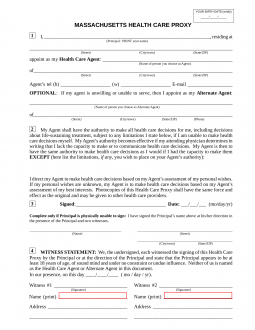Amid the coronavirus epidemic, many of us have been residing in fear of requiring healthcare. For some, it is because of the danger of catching COVID-19 throughout a physician's workplace or health center go to; for others, it's because of how expensive health care is. These days, all it takes is one surprise medical bill to send a patient into personal bankruptcy.
In fact, the greater costs imply the U.S. invests more on health care than other "developed countries," a 2019 Johns Hopkins report found. What's more, practically one in three Americans stresses about affording health care, according to a February 2020 survey from NBC News. (Simply just recently, a male who was hospitalized with COVID-19 for 62 days received a $1.
so costly? Health insurance coverage prices? Government policy or absence thereof? The pharmaceutical market? TMRW spoken to professionals on various elements of the health care system who indicated five total reasons. The most prominent reason is that U.S. health care is based on a "for-profit insurance system," among the Substance Abuse Treatment only ones in the world, according to Carmen Balber, executive director of Customer Watchdog, who's advocated for reform in the health-insurance market.
On the other hand, "great deals of other countries have some aspect of personal something, however there is that baseline understanding that health care is a right, not a benefit," Balber said. The underlying motive to generate income has a causal sequence that increases rates, she continued. For instance, insurer spend an "enormous amount of money on utilization review," the process that determines whether a medical service is covered under an offered plan, adding that the goal is "to not pay consumers for the care they thought they were guaranteed for." Similarly, Dr.
paying for somebody else's underpayment, whether they like it or not," he said. "Everyone is attempting to determine who else can spend for it rather of them." Benjamin called out the complex and fragmented structure of U.S. health care from billing to care delivery which can unnecessarily lengthen administrative processes and increase overhead.
2% of health care expenses in the U.S., two times the percentage in Canada, which has actually a decentralized, publicly financed system. Another example: Medicare, the nation's national medical insurance program for Americans 65 and older, has much lower administrative costs, in between 1. 1 and 7%." Medicare ... is dramatically cheaper, because we do not spend a great deal of time attempting to reject individuals the care they need," Balber said.
Rumored Buzz on Why Was It Important For The Institute Of Medicine (Iom) To Develop Its Six Aims For Health Care?
healthcare exists in a system where patients are charged based upon the services they receive, yet another reason that "almost whatever is more pricey here," Dr. Harlan Krumholz, cardiologist and professor of health policy at Yale School of Medication, informed TMRW." We have higher usage of a lot of various services," he discussed.

It's in the financial interest of the medical facility, the physician, the healthcare system when they're being paid fee-for-service, and the validation is that more is much better." As a result, there's lower use of main care, Benjamin stated, because the fee-for-service model "motivates overutilization."" Instead of taking individuals in a room, examining them, taking the history and spending the time talking with patients, we .. how to qualify for home health care..
" We're fast to jump to getting the CAT scan and diagnostic test when a history and physical examination would inform you the response. when does senate vote on health care bill." Balber argued that fee-for-service produces a "perverse incentive" to offer more treatments, instead of assisting patients get healthier so that the nation as a whole needs less treatments.
likewise invests less than other nations on social support systems and long-lasting care, Benjamin added. This is possibly the most challenging factor to http://reidzdjj144.xtgem.com/the facts about how much does medicare pay for home health care per hour revealed disentangle, however the essence is this: The companies that offer and charge for healthcare, like medical facility systems and drug makers, have more power to keep expenses high when they're negotiating with multiple prospective payers, like different personal insurer.
For instance, a current research study found that personal insurance coverage business paid nearly two and a half times what Medicare would've paid for the same medical service at the same center. To make matters more costly, the U.S. federal government does not control what a lot of companies in the healthcare area can charge for their services, whether it's insurance coverage, drugs or care itself." It's an actually poignant argument today, when you can point to companies that are establishing COVID vaccines with government money, and they're going to charge us a fortune for their vaccine," Balber included.
healthcare system itself might be fragmented, in lots of parts of the country, there's just one or more business providing medical insurance or healthcare. This means that, again, there's little to no incentive for them to reduce expenses since patients don't have much of an option." We keep authorizing more and more mergers that raise expenses significantly," Balber said.
The Main Principles Of Countries Whose Health Systems Are Oriented More Toward Primary Care Achieve
and after that profit intention is structured all the way down to your primary-care physician." What's more, health care companies are paid, usually, a lot more in the U.S. than in other countries, both Benjamin and Krumholz worried." Despite the massive expense that we have in America for health care, we don't get the same value of our health care dollar as other nations do," Benjamin added.
More and more insurance companies are disclosing at least some worked out prices to members who sign up with their sites. Benefit from that function if your health insurance uses it, specifically for things you can prepare in advance, such as imaging tests. In a recent experiment, people set up for CT scans or MRIs were called and informed about less expensive options of equal quality; they ended up conserving participating insurance companies approximately $220 per scanand prompted more pricey suppliers to cut their prices.
CalPERS, which purchases health insurance coverage for 1. 3 million California state staff members and retired people, set a reference Drug Detox rate of $30,000 for routine hip and knee replacements after finding it was paying as much as $110,000 for those treatments. In the first year, cost savings balanced $7,000 per patientand a number of high-cost medical facilities all of a sudden found that they, too, might offer $30,000 joint replacements.
You can save about 20 percent on premiums by registering with a strategy that has fewer service providers than customary. Suppliers give the insurance company a rate break in exchange for fewer competitors - how many health care workers have died from covid. But prior to signing on, make sure that the network consists of the physicians, medical facilities, laboratories, and other services you need within a reasonable distance from your house which they accept brand-new patients.
Lots of people presume that their living costs will drop considerably in retirement. But lots of senior citizens in fact discover that their living costs mainly remain the exact same or even go up. While there are various reasons for this trend, the ever-climbing expense of healthcare is a big contributor. The average healthy 65-year-old couple retiring this year is expected to spend a whopping $387,644 on healthcare in retirement, according to new quotes by HealthView Solutions, a cost-projection software supplier.

